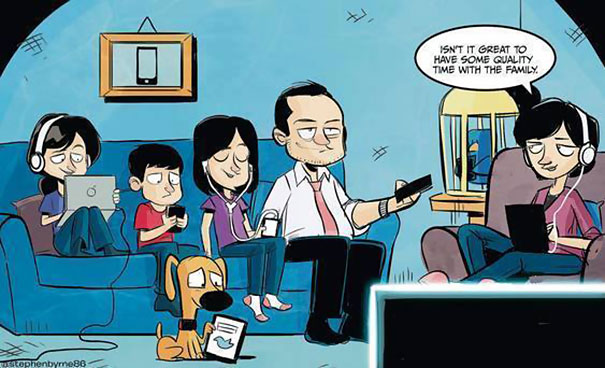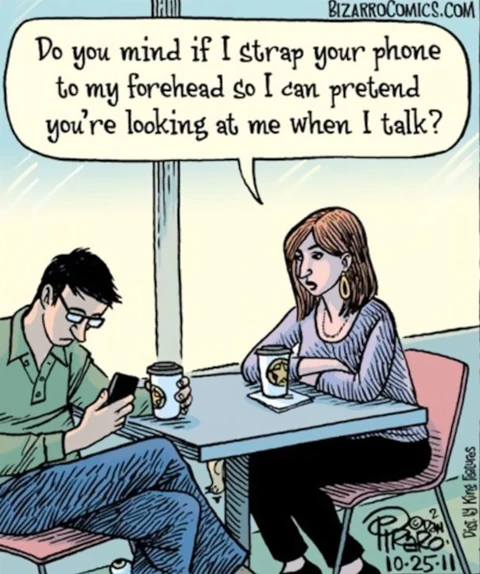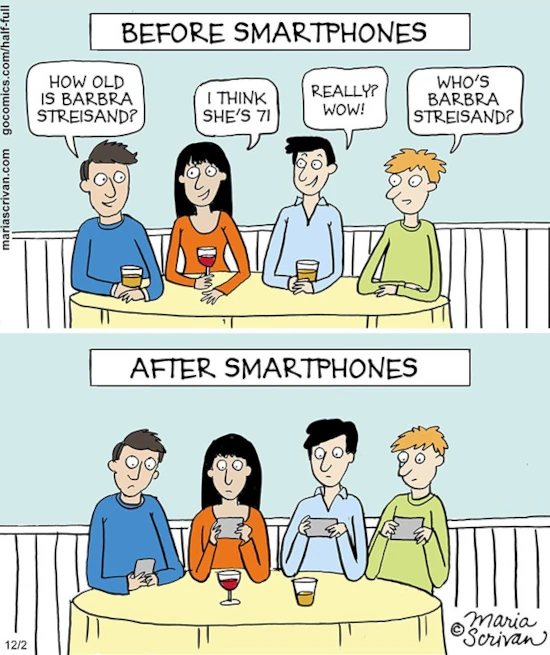Quick Strategies for Reducing Smartphone Screen Time

Introduction: Why Reducing Smartphone Screen Time Matters Today
In today’s hyperconnected society, smartphones have become a central force in our lives.
They provide convenience, entertainment, and an endless stream of information. However, our increasing reliance on these devices has led to an escalation in screen time, which comes with significant repercussions for our health, productivity, and overall well-being.
Reducing smartphone screen time is more important than ever, as we face issues like declining attention spans, deteriorating relationships, and a rise in digital dependency.
A mindful approach to smartphone use not only fosters better health but also cultivates richer, more present experiences.
The Impact of Excessive Smartphone Use on Your Health
Excessive smartphone usage can negatively affect both physical and mental health.
Prolonged screen exposure contributes to eye strain, headaches, and poor posture. Beyond the physical toll, it alters the way we engage with the world, increasing stress and diminishing our capacity for real-life connections.
Spending hours scrolling through apps can lead to a sedentary lifestyle, further heightening the risk of chronic health conditions like obesity and cardiovascular disease.
Addressing smartphone overuse is vital for maintaining a healthier balance between our online and offline lives.

How Smartphone Screen Time Affects Sleep Quality
Smartphone usage, especially at night, has a direct impact on sleep quality.
The blue light emitted by screens disrupts melatonin production, the hormone that regulates our sleep-wake cycle. This leads to difficulty falling asleep, insomnia, and poor sleep quality overall.
Sleep deprivation, in turn, affects cognitive functions such as memory, focus, and decision-making. By limiting screen time before bed, one can improve sleep patterns and wake up feeling refreshed and more alert.
Mental Health Implications of Too Much Screen Time
Smartphone overuse also has profound effects on mental health. Constant notifications and endless content consumption create a sense of overwhelm and anxiety.
Moreover, the pressure to stay connected and constantly updated can lead to feelings of inadequacy and depression, particularly through social media.
Studies have linked excessive screen time with increased rates of anxiety disorders, loneliness, and even diminished self-esteem.
Reducing screen time can offer mental clarity, emotional resilience, and a stronger sense of control over one’s life.
Why Digital Detox is Crucial in a Hyperconnected World
In a world where digital connectivity is both a blessing and a curse, unplugging from the constant stream of information is crucial.
A digital detox helps reset our minds, reducing mental fatigue, and regaining a sense of inner peace. It allows us to reconnect with ourselves, our surroundings, and the people we care about.
Whether it is a day-long break or a weekend without screens, regular detox periods help combat digital burnout and improve overall well-being.

Understanding Your Smartphone Habits: Track Your Screen Time
The first step in cutting down smartphone screen time is understanding how much time is being spent on the device.
Tracking screen time helps uncover patterns of use—whether its aimless social media browsing or excessive app engagement. Awareness of these habits allows for targeted strategies to reduce unnecessary usage.
Many smartphones now offer built-in tracking features, providing detailed insights into daily and weekly consumption.
The Power of Awareness: How to Measure Your Screen Time Usage
Measuring screen time brings awareness to our digital habits.
By setting up tracking tools like Apple’s Screen Time or Google’s Digital Wellbeing, users can monitor daily usage, set limits for specific apps, and receive reports on their activity.
This data-driven approach empowers users to make conscious choices about their screen time, transforming passive consumption into mindful usage.
Using Apps and Tools to Monitor and Control Screen Time
Several apps exist to help manage and control screen time. Tools like Moment, Freedom, and StayFocusd block distractions and set limits on app use.
These tools not only help minimise distractions but also encourage intentional engagement with your phone.
By installing such apps, you create digital boundaries that prevent overuse and promote healthier smartphone habits.

Creating Tech-Free Zones in Your Home
Creating tech-free zones in your living spaces encourages meaningful interaction and focus.
These spaces—whether it is your bedroom, dining room, or home office—become sanctuaries for screen-free activities like reading, cooking, or engaging with loved ones.
Removing devices from these areas fosters better mental clarity and an environment conducive to relaxation.
Designating Specific Areas for Screen-Free Activities
Assigning designated areas in your home for screen-free activities builds healthier habits.
A dining room reserved solely for meals and conversation, for example, allows for more genuine connections with family members.
Similarly, screen-free bedrooms support better sleep, while quiet corners dedicated to hobbies or reading create opportunities for personal growth outside the digital realm.
How Tech-Free Zones Improve Focus and Relationships
Tech-free zones cultivate deeper focus and foster stronger relationships. Without the distraction of phones, people can engage in more meaningful conversations and activities.
These zones improve the quality of family time, encourage eye contact, and help create bonds based on shared experiences rather than mediated ones.
Establishing these spaces strengthens emotional connections and provides a respite from the digital noise.

Scheduling Screen-Free Time in Your Day
Allocating specific times in your daily schedule for screen-free activities is a powerful way to regain control of your time.
Whether it is during meals, a walk, or an evening wind-down routine, having set periods where screens are off limits enhances productivity and relaxation.
Planning this time ensures a balanced approach to technology, where it serves rather than controls your daily life.
How to Plan Regular Digital Breaks: Simple Steps for Success
Incorporating regular digital breaks throughout the day helps reduce mental clutter. Start small by taking 10–15-minute breaks every couple of hours.
Use this time to stretch, take a walk, or engage in a non-screen-related task. Gradually, these breaks will become an essential part of your routine, allowing you to refresh your mind and reduce digital fatigue.
Incorporating the 20-20-20 Rule to Prevent Eye Strain
The 20-20-20 rule is a simple yet effective strategy to alleviate eye strain caused by prolonged screen time. Every 20 minutes, look at something 20 feet away for 20 seconds.
This technique reduces eye discomfort and helps reset your focus, making it easier to continue working without the negative effects of screen fatigue.
Mindful Usage: Setting Daily Limits on App Time
Mindful smartphone usage begins by setting daily app time limits. Most smartphones allow you to set specific time limits for each app.
This helps prevent aimless scrolling and creates more intention around your usage. Over time, these limits promote healthier interactions with technology, as you become more aware of where and how your time is spent.
How to Set and Stick to App Time Limits for Social Media
Setting app time limits for social media is a key strategy for reducing screen time. Decide on a reasonable daily limit, such as 30 minutes, and ensure your phone enforces this limit.
It is important to resist the temptation to override these limits, as this discipline helps break the cycle of endless scrolling and fosters a more intentional social media experience.
Reducing Screen Time with Offline Alternatives
To successfully reduce screen time, it is essential to fill that newfound time with meaningful offline activities.
Whether it is reading a book, taking up a hobby, or spending time outdoors, offline alternatives create opportunities for growth and relaxation without the lure of screens.
By actively pursuing these alternatives, you shift your focus from digital to real-world engagements.
Finding New Hobbies to Replace Mindless Scrolling
Replacing mindless scrolling with new hobbies enriches your life in unexpected ways. Learn to cook, paint, or play an instrument—anything that stimulates creativity or curiosity.
The satisfaction of honing a new skill is far more rewarding than hours spent lost in the depths of social media.

Outdoor Activities: A Natural Solution for Reducing Screen Time
Stepping outdoors is one of the most effective solutions for reducing screen time.
Whether it is a simple walk, a hike, or engaging in sports, being in nature shifts your focus away from screens and provides a natural boost in mental and physical well-being.
These activities not only break the digital cycle but also offer an opportunity to reconnect with the world around you.
Building Healthy Routines That Minimise Smartphone Use
Incorporating healthy routines into your day can significantly reduce smartphone usage.
Start your mornings without immediately checking your phone, instead focusing on a mindful activity like stretching or journaling.
In the evenings, establish a routine that encourages relaxation without screens—such as reading or meditating—to prepare for better sleep and a more balanced life.
The Power of Morning and Evening Routines for a Screen-Free Life
Morning and evening routines hold immense power in creating a screen-free life.
Begin your day with activities that set a positive tone—whether it is exercise, a nutritious breakfast, or a few moments of quiet reflection.
Likewise, ending the day without the glow of a screen helps your mind wind down and signals your body that it is time for rest, leading to better sleep and a more grounded lifestyle.
Turn Off Unnecessary Notifications to Limit Distractions
Notifications are one of the primary culprits of smartphone overuse.
By turning off non-essential notifications, you eliminate the constant barrage of alerts vying for your attention.
This creates a more peaceful environment, allowing you to focus on the tasks at hand without the temptation to check your phone every few minutes.
How to Disable Push Notifications for a More Peaceful Day
Disabling push notifications is a simple yet powerful way to reduce distractions.
Go to your phone’s settings and turn off notifications for non-essential apps like social media, games, or shopping platforms.
By doing so, you will notice a more peaceful and focused day, where your attention is not constantly being pulled in multiple directions.
Reclaim Your Productivity by Turning Off Constant Alerts
Constant alerts from your phone can significantly reduce your ability to focus and stay productive.
Every notification—whether it is from a social media platform, email, or a game—competes for your attention, making it difficult to complete tasks efficiently. By silencing or disabling non-essential notifications, you eliminate a major source of distraction.
This simple action helps create a more controlled environment where you can work, think, or enjoy your downtime without being constantly interrupted. As a result, you will find that you can accomplish more and with greater clarity.
Maximising Focus: Use Do Not Disturb Mode
Many smartphones offer a “Do Not Disturb” mode that allows you to block all notifications during designated times.
This is especially useful when you are focusing on a project or need some quiet time to relax. Whether it is for an hour of deep work or a full night’s sleep, using this feature creates an uninterrupted space, allowing you to focus on what really matters.

Final Thoughts: Take Control of Your Smartphone Use
Reducing smartphone screen time is a journey toward better health, increased focus, and improved relationships.
Whether you incorporate tech-free zones, take digital breaks, or use tools to track and manage your usage, each step helps you regain control over how and when you engage with your device.
The key is balance—using technology as a tool to enhance your life, not dominate it. By applying these strategies, you can reduce screen time, boost productivity, and live a more present, connected life.
Prioritise what truly matters—whether it is your health, relationships, or personal growth—and take control of your digital habits.
Frequently Asked Questions (FAQ)
You can use apps like Screen Time (iOS) or Digital Wellbeing (Android) to monitor your usage and help identify areas to reduce.
Start by deleting time-wasting apps, muting non-essential notifications, and taking short breaks throughout the day.
Creating phone-free zones, such as bedrooms or dining areas, helps reduce the urge to check your phone constantly, improving focus and relaxation.
Begin by cutting 30 minutes of screen time per day, then gradually increase this to an hour over the next week.
Yes, setting daily limits on specific apps can be an effective way to gradually decrease your screen time.
Taking regular breaks from video calls and avoiding unnecessary video content can help reduce video fatigue and screen-related stress.
The Do Not Disturb mode silences all non-essential notifications during specific times, helping you stay focused without constant interruptions.
Reducing screen time can improve mental health, enhance productivity, and strengthen personal relationships by fostering more present and mindful interactions.
Affiliate Declaration:
The use of affiliate links on this website may result in earning a small commission for any purchases made, at no additional cost to you (the user). Please review our privacy and cookie policy, as well as our affiliate disclaimer.

